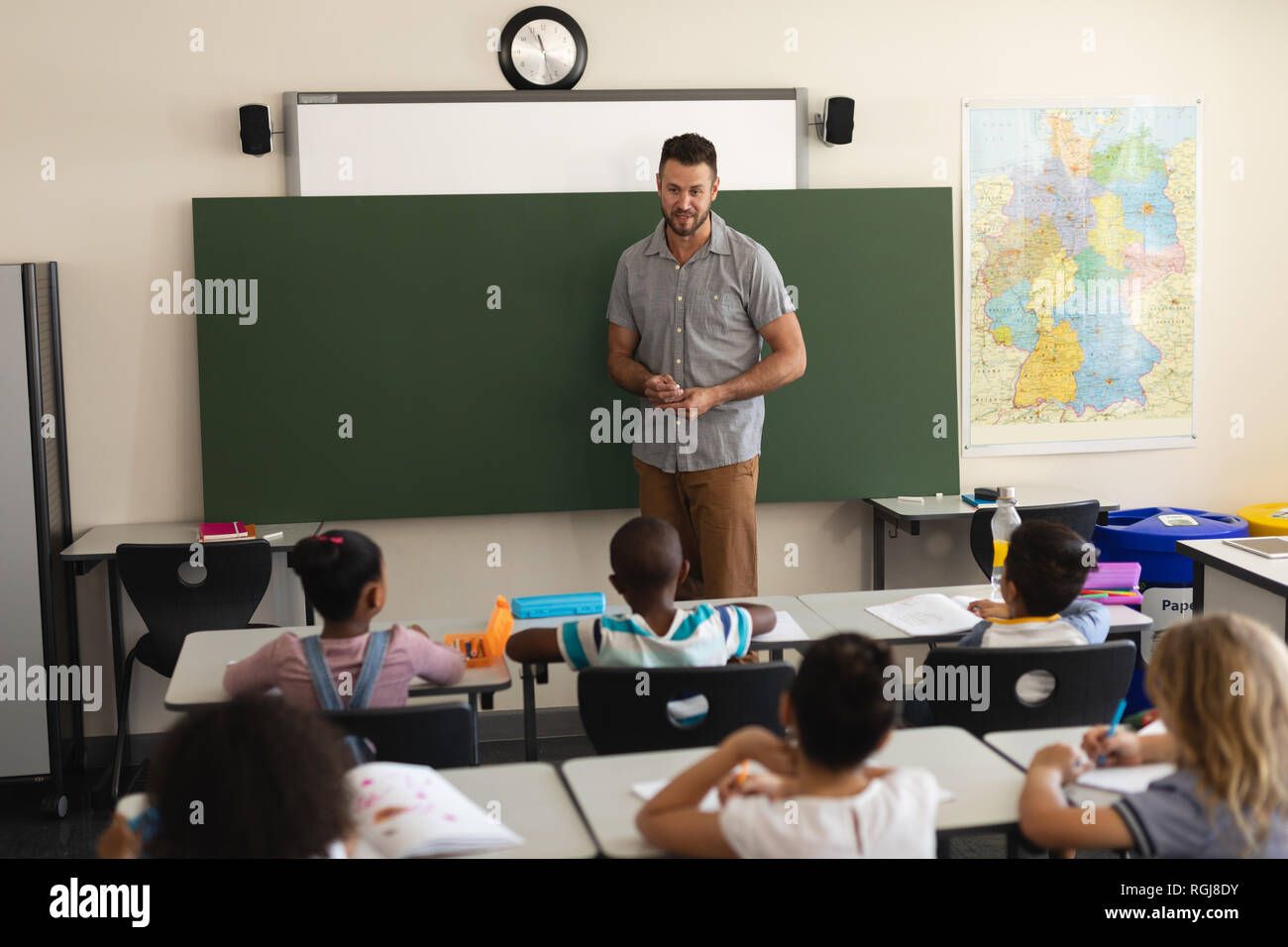A Comprehensive Guide to the Different Discovering Techniques in Primary Scientific Research Instruction
The exploration of varied knowing methods in main scientific research direction presents an opportunity for educators to enhance pupil interaction and comprehension substantially. By analyzing hands-on learning strategies, inquiry-based methods, and collaborative strategies, we can identify reliable techniques that provide to various learning styles.

Hands-On Discovering Methods
Hands-on discovering methods play a critical role in main science instruction, involving students in energetic exploration and trial and error. These approaches allow students to engage directly with sensations and materials, cultivating a deeper understanding of scientific concepts. By utilizing manipulatives, versions, and real-life experiments, instructors produce an environment where trainees can observe, hypothesize, and test their concepts.
Such strategies not just boost comprehension yet additionally grow vital thinking and problem-solving abilities. When students join activities like building simple equipments, growing seeds, or carrying out chemical responses, they are encouraged to ask questions and look for responses with their own observations. This experiential method aids to demystify intricate scientific concepts, making them extra relatable and obtainable.
Additionally, hands-on discovering advertises cooperation amongst peers, as trainees typically operate in groups to carry out experiments or share findings. This team effort not just improves their learning experience however likewise creates essential social skills. Eventually, integrating hands-on methods in key scientific research instruction fosters a long-lasting love of knowing and curiosity regarding the environment, laying a solid structure for future scholastic searches in scientific research and past.
Inquiry-Based Discovering
Inquiry-based learning is a training approach that urges students to ask concerns, investigate sensations, and create their very own understanding of clinical principles. This approach changes the focus from standard teacher-led guideline to a more student-centered experience, where students take the effort in their instructional journey. By promoting interest, inquiry-based discovering advertises deeper involvement with the product, allowing trainees to discover topics in a meaningful context.
In practice, this technique frequently involves hands-on experiments, observations, and vital thinking activities that straighten very closely with the scientific method. Trainees are encouraged to develop hypotheses, design investigations, and evaluate data, which grows vital skills such as problem-solving and analytical reasoning. The duty of the educator in this structure is to facilitate exploration, directing students via the query procedure while urging independent thought and collaboration.
Moreover, inquiry-based understanding nurtures a feeling of possession over the discovering process, motivating students to pursue understanding actively. This approach not just improves understanding of scientific concepts however additionally cultivates a long-lasting love for understanding, equipping pupils with the skills essential to browse an increasingly complex globe.
Collaborative Understanding Approaches
Collaborative learning methods encourage trainees to participate in significant interactions with peers, cultivating a shared duty for their educational outcomes. In key scientific research direction, these strategies urge learners to collaborate to discover scientific concepts, address issues, and perform experiments (primary science tuition Singapore). By participating in group tasks, trainees can take advantage of diverse perspectives, enabling richer understanding and retention of scientific understanding
One trick element of collective knowing is the focus on communication abilities. Pupils need to verbalize their ideas, listen actively to others, and bargain concepts, all of which are crucial proficiencies in both real-world and academic contexts. This social communication not just boosts their understanding of clinical principles however additionally promotes synergy and conflict resolution skills.
In addition, joint understanding commonly causes increased motivation and involvement. When trainees see the value of their contributions within a team, they are most likely to take possession of their understanding journey. Educators can promote this procedure by designing organized team jobs that align with educational program objectives while supplying assistance on efficient cooperation methods. In general, incorporating collective understanding methods in primary scientific research guideline cultivates a dynamic knowing atmosphere that prepares pupils for future scholastic and social challenges.
Innovation Combination in Scientific Research
The assimilation of modern technology in primary scientific research guideline enhances finding out experiences by offering ingenious devices and sources that support numerous training techniques, consisting of collaborative knowing - primary science tuition Singapore. Making use of digital platforms, simulations, and interactive applications Our site permits trainees to engage deeply with clinical ideas, assisting in a more hands-on method to understanding
Online labs, for example, allow learners to carry out experiments safely and successfully, advertising inquiry-based discovering. These tools can simulate real-world clinical situations, enabling students to picture complicated processes that would certainly be challenging to duplicate in a standard classroom setup. Innovation fosters interaction and collaboration among pupils, as they can share findings and work with each other on projects through online systems.
In addition, multimedia presentations and instructional video clips can enrich lessons by catering to diverse learning styles, making abstract principles much more obtainable. Data analysis devices additionally encourage trainees to gather and translate scientific information, enhancing like it essential assuming skills. On the whole, the critical incorporation of technology in key scientific research instruction not only improves interaction however also prepares trainees for a highly sophisticated culture, outfitting them with essential abilities for future clinical ventures.
Set Apart Guideline Approaches
Differentiated guideline techniques are important for addressing the varied demands of learners in key scientific research education and learning. These strategies allow educators to tailor their teaching approaches to accommodate differing abilities, passions, and discovering styles within the class. By utilizing differentiated guideline, educators can create an inclusive setting that promotes engagement and enhances understanding of scientific principles.
One effective method is to make use of versatile organizing, which allows students to work together with peers at comparable ability degrees or with differing point of views. This strategy motivates peer knowing and promotes vital reasoning. In addition, using selections in assignments can empower trainees, allowing them to choose tasks that resonate with their passions while still meeting curricular goals.
Furthermore, integrating tiered tasks is an additional beneficial technique. Deliberately jobs with differing degrees of intricacy, educators can make sure that all students are properly challenged, regardless of their efficiency. Making use of formative assessments to gauge comprehending additional enables instructors to change their instructional methods dynamically, making certain that each learner obtains the support they need.
Ultimately, carrying out separated guideline strategies in key science education and learning not just enhances student understanding outcomes but additionally cultivates a passion for scientific research, preparing pupils for future academic quests.

Final Thought
In summary, effective main scientific research instruction requires a multifaceted method that includes hands-on web learning, inquiry-based methods, and collective strategies. The integration of innovation and separated instruction further provides to varied understanding designs, cultivating an atmosphere favorable to expedition and important reasoning.
The expedition of diverse learning techniques in main science direction provides an opportunity for teachers to improve student interaction and understanding substantially.Hands-on discovering techniques play an essential duty in primary science guideline, involving trainees in active expedition and testing.Inquiry-based knowing is a training technique that encourages students to ask concerns, examine sensations, and build their own understanding of scientific principles.Joint knowing methods encourage trainees to involve in purposeful interactions with peers, fostering a common responsibility for their academic outcomes. Generally, integrating collective discovering techniques in main scientific research instruction grows a dynamic understanding environment that prepares trainees for future scholastic and social obstacles.
Comments on “Find the Best Primary Science Tuition Singapore for Enhanced Learning”